Suriname
Things to Do
Commewijne district
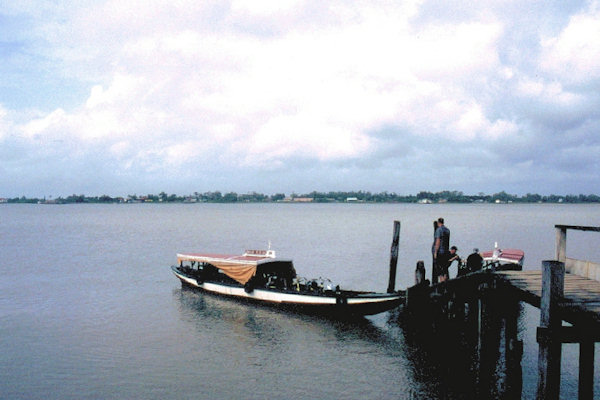 |
|||||
The Commewijne district is located on the right bank of the Suriname River, directly east of Paramaribo.
Commewijne's economy is mainly based on agriculture, with plantations which may have originated during the first years of Dutch
colonization in the seventeenth century.
Of all the plantations in Suriname, those in Commewijne remained functioning the longest.
Today some are still working, but it looks like the good days are over; gradually more are falling into decay, as do the
original buildings.
Ever since the large bridge across the Suriname river was built, large scale urbanisation of the Commewijne district began,
including some gated communities.
Frederiksdorp
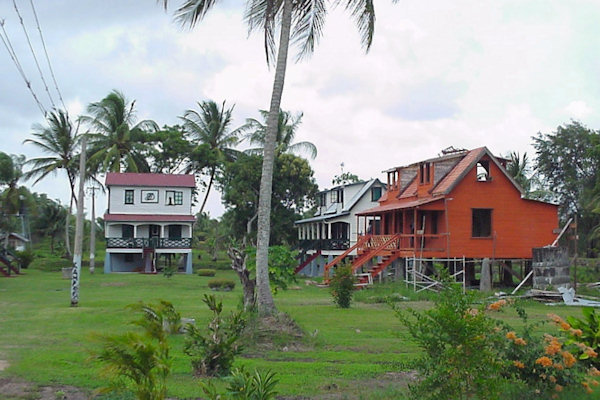 |
|||||
Frederiksdorp was a coffee and cocoa plantation on the Commewijne River in the district Commewijne in Suriname.
The plantation is named after Johan Friedrich Knoffel, who founded it as a coffe plantation in 1747. It incorporates
several historical buildings, moost notably a directors house dating from the 1760s and prison cells from the plantation's lenghty
stint as the capital off Commewijne prior to the administration being located to Nieuw Amsterdam in 1907.
In 2001 the restoration of the historic buildings on plantation Frederiksdorp started. After the restoration the buildings
were used for touristic process. Consequently, this touristic function ensures continuous the maintenance of the buildings.
Frederiksdorp has a long cultural historic, architectonic and urban value. For this reason the former plantation is considered so
unique, which made it the first project of historic buildings outside Paramaribo that has been added to the monument list.
Mariënburg
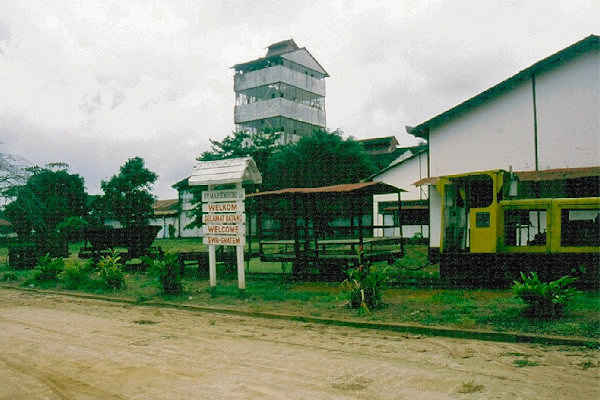 |
|||||
Mariënburg, the oldest sugar cane plantation, was built by the English in 1650.
In 1882 the Dutch Trading company started a central Sugar factory. In 1890 the first Javanese immigrants were put to work on
Mariënburg. The Indian immigrants already worked there for many years.
Mariënburg was once the largest sugar factory and distillery in Suriname. Sugar molasses was distilled into the renowned Black
Cat rum.
On the 29th of July 1902, riots broke out on the plantation. Angry Hindustani workers attacked and killed a Scottish director
with their machetes. The army was brought in to crush the revolt and 25 immigrants were killed. A monument was put up in their
memory.
Plantation Marienburg has deteriorated, but the factory is still visited by tourists.
Peperpot
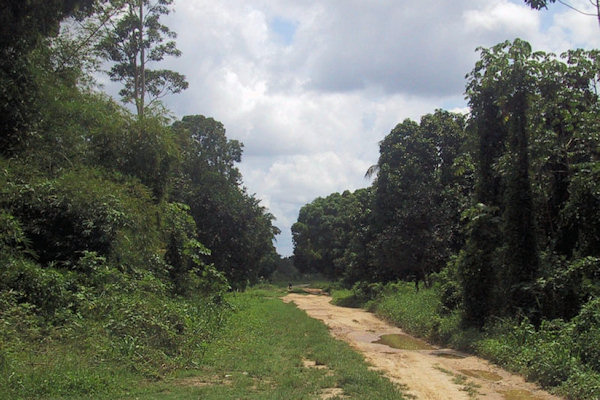 |
|||||
Peperpot is a plantation at the other side of the Suriname river, not far from Paramaribo.
The plantation was established in the beginning of the 19th century by the Jansen family as a coffee and cocoa
plantation.
On the factory plant there are two plantation residences, a coffee storehouse built in 1802 and currently under renovation, and a
coffee and cocoa factory. The production was continued until 1996.
There is also a kampong with laborer’s houses where Javanese live although they have now found work elsewhere.
You can still recognize the coffee and cocoa trees that are now overgrown with bromelias, orchids and climbing plants. The
animals have regained this area.
Peperpot is popular among bird lovers but if you are lucky you can also encounter squirrel monkeys, capuchin monkeys and
‘sapakaras’ (giant lizards) on the trails that run straight through the plantation.
Stolkertsijver
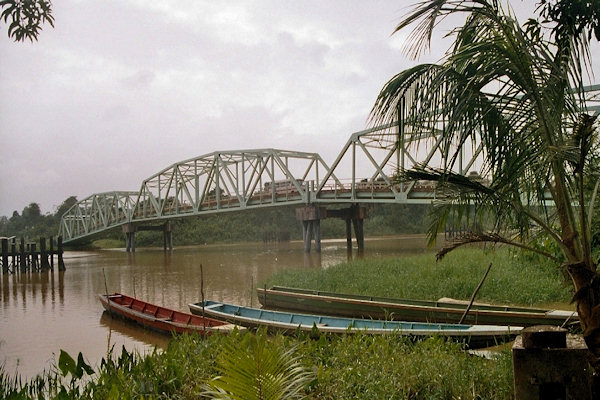 |
|||||
Stolkertsijver is a town in the Commewijne District of Suriname.
It is situated on the East-West Link.
At Stolkertsijver, a bridge spanning the Commewijne River was built in 1980.
The village was named after the Stolkertsijver plantation, also known as Courcabo. The plantation was founded around
1670 and owned by Jeronimo Clifford.
Fort New Amsterdam
Fort New Amsterdam was built between 1734 and 1747, after the French under Cassard directly attacked the plantations
instead of Fort Zeelandia and the city of Paramaribo.
The Geoctroyeerde Sociëteit van Suriname decided to protect both the plantations and the city by constructing a fort at the
strategically important confluence of the Suriname and Commewijne rivers, which lies rather close to the ocean.
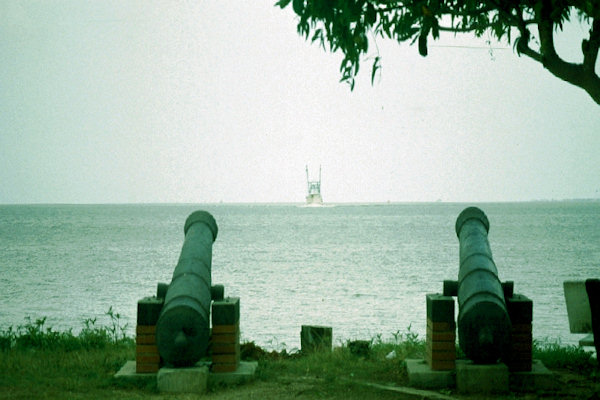 |
|||||
The fortress is a large earthen pentagon with bastions at the five corners. On the premises different buildings were erected, many of
which did not survive the wear and tear of time.
The 1778 Powder House still is in its authentic state. It stands in the middle of a pool and is constructed out of thick brick wall
with buttresses that support a vault. The purlins of the roof lie directly on top of this vault.
It still never stand really met the demands. The gunpowder storehouses proved to be too damp for the storage of gunpowder, the result
of the ignorance of Dutch experts concerning local climate conditions.
In the course of the 19th century the significance as a defense structure decreased. In 1872 parts of the barracks were reconstructed
to become a prison, a function they kept till 1982.
In 1907 the fortress became the administrative centre of the Commewijne district, thus definitely being stripped of its military function.
West Coast
The West Coast region of Suriname comprises the three Surinamese coastal districts between Paramaribo and the western border with
Guyana: Coronie, Nickerie and Saramacca.
There are a few towns and some choices as far as accommodation goes, but this is a place away from the crowds and often overlooked
by visitors.
Groningen
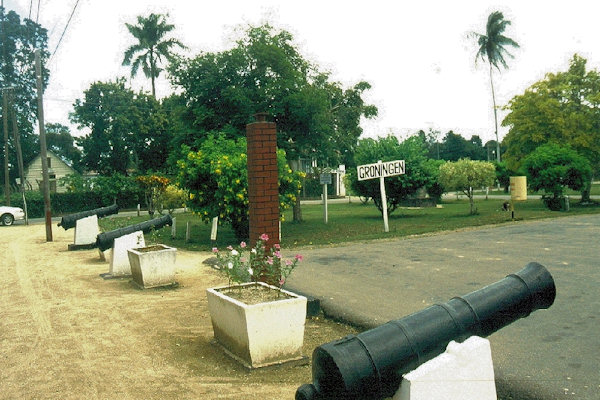 |
|||||
On the shores of the Saramacca River, about 40km west of Paramaribo, is rural Groningen. It's a nice place to
visit if you want to escape from busy Paramaribo.
At the end of 1845 the survivors of a group of Dutch farmers, led by Pastor Arend van den Brandhof, arrived in Groningen.
Within six months nearly two hundred people had died of typhus and Colonization was considered a failure in 1853, when there was a
total of 43 people left living in Groningen. The following year their leader, Arend van der Brandhof, departed, heading back to the
Netherlands. His wife, Anna Pannekoek, had died in 1845 and been buried in the cemetery in Groningen.
When the districts were established in 1863, Groningen became the capital of the Saramacca district.
On the somewhat pathetic independence square you will find a large number of monuments that commemorate anything and
everything: Javanese farmers, Boeroes, Surinam's independence, the abolition of slavery, etc. Near to the water is the tea house,
a kind of kiosk which is a popular place for a picnic.
Coronie
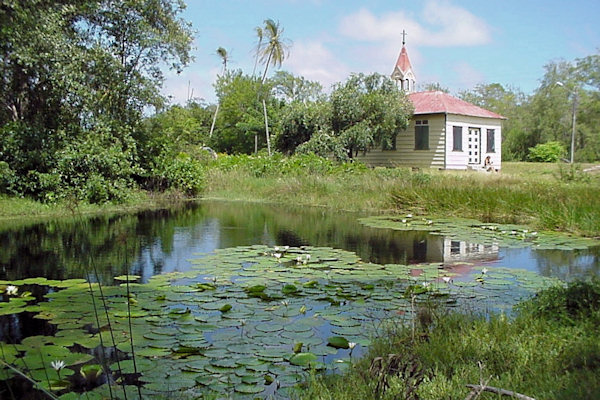 |
|||||
Coronie has the image of a forgotten district that one passes through rapidly on ones way to Nickerie.
Contrary to other parts of Suriname the plantations in Coronie were set up directly next to the sea. The transport of produce
of the plantations took place via canals with sluices straight to the open sea.
This caused the area to be quite isolated until the East-West main road was constructed. Many buildings rest on short pillars,
probably because the bulk of the plantations were flooded every now and then.
Although there are signs of repair, most buildings in this poor district are in a deplorable state most of the time, probably
since painting and replacement of parts is started far too late.
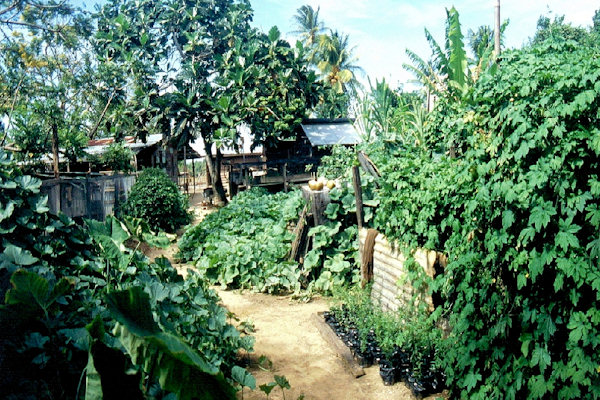 |
|||||
Coronie is known for its Coconut Palm trees.
In earlier years coconut oil was made on a great scale. But now this industry has been closed for quite some time.
Some locals however still uses the coconut's to make coconut oil. Coconut oil is considered by some to be a very healthy oil.
Consumption of virgin coconut oil (unhydrogenated) is claimed to cause increased metabolism and an improved immune system.
The remainings off the proces is used to feed there pigs
Totness/Wageningen
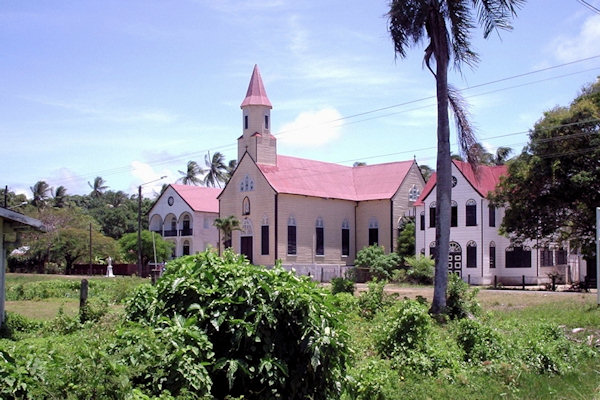 |
|||||
Totness is the district capital of Coronie. The name Totness as well as the names of other nearby hamlets, like
Friendship, Mary's Hope and Burnside descend from English and Scots who settled here in the 19th century. It
is a very laid back area with nice buildings along the main road and near the central square of Totness. If you only want to have
lunch there is a Javanese warung along the road
Wageningen; a visit to this small town is not really a must do. Once this town was the centre of mechanized rice cultivation, a
project of the Agricultural University of its namesake Wageningen in the Netherlands. After independence in 1975 it collapsed and
the gigantic complex with silos remains desolate. Still, a visit to this town can be pleasant as people are very friendly and hospitable.
A statue of the (legendary) female slave Alida can be found on a square near the closed rice processing factory. A red spot
indicates where her breast was cut off thanks to the jealous wife of a planter.
Nieuw Nickerie
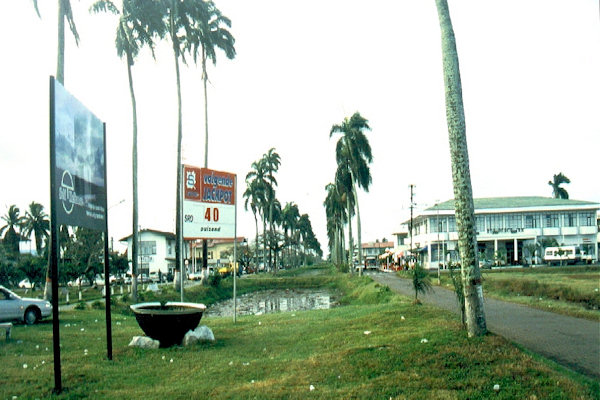 |
|||||
Nickerie used to be a flourishing rice district, but now little of that is left.
Along the East-West main road lie the former rice fields in decay and the yellow double-decker airplanes with which the paddy is
sown and the fields are sprayed don’t take off that industriously anymore from their short airstrips next to the road.
Nieuw Nickerie has about 14.000 inhabitants and that makes it the third largest settlement in Suriname! It looks like a
village and in the centre is a freshwater canal full of water lilies that leads to the central Brasa square. Here you
also can find the local market.
North of de Zeedijk is the Ganga Mandir Hindu Temple where the retired female manager changes the robes of the large number
of religious sculptures on a regular base. At the end of the wall is the local open air cremation place where Hindus from all over
the country cremate their deceased relatives.